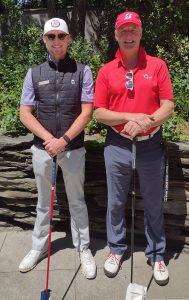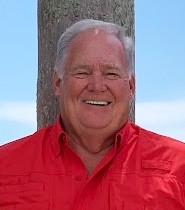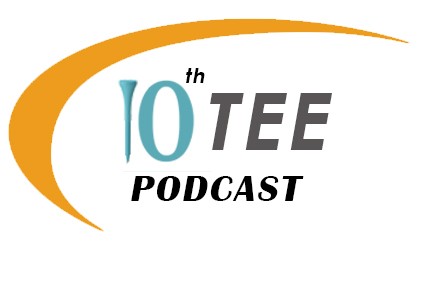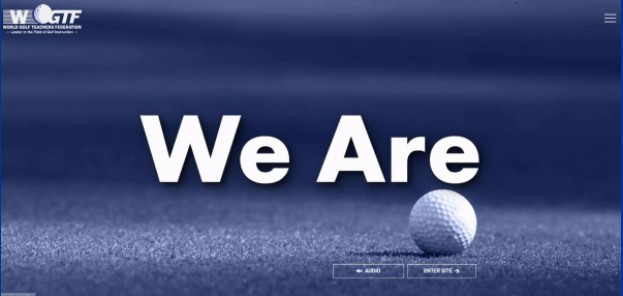Product Spotlight – Cobra Golf
 Cobra Golf, a longtime industry partner of the USGTF, features products and innovations that are among the best in the business. With brand ambassadors such as Rickie Fowler, Lexi Thompson and Bryson DeChambeau, Cobra has a significant following and an identity that makes it among the most “hip” of brands.
Cobra offers all USGTF members in good standing a 20% personal use discount off the wholesale price on all its products. To take advantage of this offer, inquiries on pricing should be directed to Member_Services@usgtf.com.
Cobra Golf, a longtime industry partner of the USGTF, features products and innovations that are among the best in the business. With brand ambassadors such as Rickie Fowler, Lexi Thompson and Bryson DeChambeau, Cobra has a significant following and an identity that makes it among the most “hip” of brands.
Cobra offers all USGTF members in good standing a 20% personal use discount off the wholesale price on all its products. To take advantage of this offer, inquiries on pricing should be directed to Member_Services@usgtf.com.


 By Johnny McCosker, USGTF Professional
My student spotlight story goes back to Lakeland, Florida, where one of my students was Jonathan Giammatteo. He was a 5-year-old that his parents brought to me for his swing training and grooming. He showed a knack and talent for the swing and wanted to improve. We worked together for several years, and it was always a joy to work with him.
As he grew up, he pursed different interests, and basketball was one of them. After several years, Jonathan came back into my golf life in 2016. He began to compete in some local golf tournaments and we re-engaged in some teaching. He decided to go all-in for golf and was accepted to the Florida Gulf Coast University in the Golf Management program. The Quechee Club hires seasonal professionals in order to help out in the summer months. I wrote a note to the director of golf at the club and recommended that he hire Jonathan as an intern for this summer. So, now it’s come full circle, and Jonathan is now currently working at The Quechee Club. It is so nice to see him grow into a fine young man and we get to see each other.
Jonathan grew into a very accomplished golfer. As a junior golfer he obtained multiple wins, including the junior club championship at Grasslands Golf and Country Club, and the Schalamar Creek Junior Championship. He also finished with a T-2 at the Junior Citrus Open. While in pursuit of his PGA card, he passed his PGA playing ability test with scores of 78-74. In September of 2021, he plans to change the script for amateur golfers and turn pro at the age of 19 and play professionally in Florida while in college. During his time as an intern at the Quechee Club, Jonathan has been able to grow as an upcoming professional learning to play on different grasses and in different conditions than what he is used to in Florida.
By Johnny McCosker, USGTF Professional
My student spotlight story goes back to Lakeland, Florida, where one of my students was Jonathan Giammatteo. He was a 5-year-old that his parents brought to me for his swing training and grooming. He showed a knack and talent for the swing and wanted to improve. We worked together for several years, and it was always a joy to work with him.
As he grew up, he pursed different interests, and basketball was one of them. After several years, Jonathan came back into my golf life in 2016. He began to compete in some local golf tournaments and we re-engaged in some teaching. He decided to go all-in for golf and was accepted to the Florida Gulf Coast University in the Golf Management program. The Quechee Club hires seasonal professionals in order to help out in the summer months. I wrote a note to the director of golf at the club and recommended that he hire Jonathan as an intern for this summer. So, now it’s come full circle, and Jonathan is now currently working at The Quechee Club. It is so nice to see him grow into a fine young man and we get to see each other.
Jonathan grew into a very accomplished golfer. As a junior golfer he obtained multiple wins, including the junior club championship at Grasslands Golf and Country Club, and the Schalamar Creek Junior Championship. He also finished with a T-2 at the Junior Citrus Open. While in pursuit of his PGA card, he passed his PGA playing ability test with scores of 78-74. In September of 2021, he plans to change the script for amateur golfers and turn pro at the age of 19 and play professionally in Florida while in college. During his time as an intern at the Quechee Club, Jonathan has been able to grow as an upcoming professional learning to play on different grasses and in different conditions than what he is used to in Florida.
 For USGTF member Jerry Ellstrom from Port St. Lucie, Florida, golf was not something that has always been present in his life, but today it is a passion of his, especially when it comes to teaching. He conducts three clinics per week and his average clientele is ages 65 and over.
“We are going about it the wrong way in trying to focus on junior golfers,” Ellstrom believes. “There are 10,000 people who retire every day and they want to learn to play golf. They have disposable income, These are the people we should be focusing on.”
Ellstrom’s golf career started in 1972 after he got out of the Army, and he wanted to learn to play the game. He received lessons from Jimmy Clark, a two-time winner on the PGA Tour. Ellstrom took lessons from Clark for five years, but what was remarkable is that only a year after taking up the game, Ellstrom had a plus handicap. to achieve this, he hit 700 range balls most days in addition to chipping and putting. But he never entertained thoughts of being a touring professional. Instead, he entered the business world, running worldwide distribution sales for a semi-conductor company. He quit playing golf for around 20 years, and upon retirement looked for a new career. He entered Keiser University where he learned to teach golf under five Top 100 instructors. He later found the USGTF when he happened upon the National Office which was then in Port St. Lucie.
Ellstrom estimates he has given 7,000 lessons the past 10 years and enjoys it immensely. He believes an older teacher’s greatest asset is the ability to communicate, and he takes what a student has and makes it better. His lasting desire is this: “I have a desire to pay it forward for people to teach the game.”
For USGTF member Jerry Ellstrom from Port St. Lucie, Florida, golf was not something that has always been present in his life, but today it is a passion of his, especially when it comes to teaching. He conducts three clinics per week and his average clientele is ages 65 and over.
“We are going about it the wrong way in trying to focus on junior golfers,” Ellstrom believes. “There are 10,000 people who retire every day and they want to learn to play golf. They have disposable income, These are the people we should be focusing on.”
Ellstrom’s golf career started in 1972 after he got out of the Army, and he wanted to learn to play the game. He received lessons from Jimmy Clark, a two-time winner on the PGA Tour. Ellstrom took lessons from Clark for five years, but what was remarkable is that only a year after taking up the game, Ellstrom had a plus handicap. to achieve this, he hit 700 range balls most days in addition to chipping and putting. But he never entertained thoughts of being a touring professional. Instead, he entered the business world, running worldwide distribution sales for a semi-conductor company. He quit playing golf for around 20 years, and upon retirement looked for a new career. He entered Keiser University where he learned to teach golf under five Top 100 instructors. He later found the USGTF when he happened upon the National Office which was then in Port St. Lucie.
Ellstrom estimates he has given 7,000 lessons the past 10 years and enjoys it immensely. He believes an older teacher’s greatest asset is the ability to communicate, and he takes what a student has and makes it better. His lasting desire is this: “I have a desire to pay it forward for people to teach the game.”
 In comparison to previous years, the game of golf has been advanced in recent years. People of all ages are now interested in the game these days. I’ve been a golf professional at RNGC (Royal Nepal Golf Club) for a long time, and according to my study, the club has gained many new members this year compared to last. In Nepal’s history, one of the schools has also adopted golf as one of their regular sports, which means that the golf game of our students will be much more knowledgeable and improved in the future, and the interest in the game will be enhanced among the youth. Despite the fact that we are currently under lockdown, we can find golf players engaged in indoor net practice. Knowing about the indoor practice, we can conclude that the players’ commitment to golf is exceptional.
RNGC has decided to focus more on the underprivileged in the junior program and provide them with more practice sessions. The underprivileged group is made up of ten boys and ten girls. Many government officers, including members of the Armed Police Force, Nepal Police, the Nepal Army and Nepal Ministers, are now interested in golf. As interest among government personnel grows, we are expecting to receive some support from the country in the near future. Despite the fact that we lack a source of funding and government support for golf, I will continue to work hard to grow and increase interest in the sport in Nepal. Finally, I’d like to express my gratitude to all of the USGTF and WGTF members who have supported me during my journey.
By Sachin Bhattari, WGTF Advisory Board Member, Nepal
In comparison to previous years, the game of golf has been advanced in recent years. People of all ages are now interested in the game these days. I’ve been a golf professional at RNGC (Royal Nepal Golf Club) for a long time, and according to my study, the club has gained many new members this year compared to last. In Nepal’s history, one of the schools has also adopted golf as one of their regular sports, which means that the golf game of our students will be much more knowledgeable and improved in the future, and the interest in the game will be enhanced among the youth. Despite the fact that we are currently under lockdown, we can find golf players engaged in indoor net practice. Knowing about the indoor practice, we can conclude that the players’ commitment to golf is exceptional.
RNGC has decided to focus more on the underprivileged in the junior program and provide them with more practice sessions. The underprivileged group is made up of ten boys and ten girls. Many government officers, including members of the Armed Police Force, Nepal Police, the Nepal Army and Nepal Ministers, are now interested in golf. As interest among government personnel grows, we are expecting to receive some support from the country in the near future. Despite the fact that we lack a source of funding and government support for golf, I will continue to work hard to grow and increase interest in the sport in Nepal. Finally, I’d like to express my gratitude to all of the USGTF and WGTF members who have supported me during my journey.
By Sachin Bhattari, WGTF Advisory Board Member, Nepal



 There are only two people in the history of golf to accomplish a remarkable feat, and that is winning the Grand Slam on both the PGA and the Champions (formerly Senior) Tours. Gary Player and Jack Nicklaus both accomplished the remarkable feat.
The majors on the regular men’s circuit are well known: Masters, U.S. Open, The Open (formerly called the British Open) and the PGA Championship. On the PGA Tour Champions, there are now five, but when Player and Nicklaus played, there were four, and winning all four constituted a Grand Slam. They are the U.S. Senior Open, PGA Senior Championship, the Tradition and the Senior Players’ Championship. Today the Senior Open (formerly the British Senior Open) has been added to the rotation, making five senior men’s majors altogether. But Player’s and Nicklaus’ feat are still considered a completion of the senior Grand Slam. USGTF president Brandon Lee recently had the pleasure of teeing it up with Player for a round.
What does it take to win the Grand Slam? Many great legends of the game came short such as Sam Snead, Arnold Palmer, Tom Watson and Phil Mickelson. So it’s not just being a great player. There may be some luck involved, but as Player once famously said, “The more I practice the luckier I get.” There’s just something special about being a career Grand Slam champion, and it can certainly be said Nicklaus and Player stand alone in that regard.
There are only two people in the history of golf to accomplish a remarkable feat, and that is winning the Grand Slam on both the PGA and the Champions (formerly Senior) Tours. Gary Player and Jack Nicklaus both accomplished the remarkable feat.
The majors on the regular men’s circuit are well known: Masters, U.S. Open, The Open (formerly called the British Open) and the PGA Championship. On the PGA Tour Champions, there are now five, but when Player and Nicklaus played, there were four, and winning all four constituted a Grand Slam. They are the U.S. Senior Open, PGA Senior Championship, the Tradition and the Senior Players’ Championship. Today the Senior Open (formerly the British Senior Open) has been added to the rotation, making five senior men’s majors altogether. But Player’s and Nicklaus’ feat are still considered a completion of the senior Grand Slam. USGTF president Brandon Lee recently had the pleasure of teeing it up with Player for a round.
What does it take to win the Grand Slam? Many great legends of the game came short such as Sam Snead, Arnold Palmer, Tom Watson and Phil Mickelson. So it’s not just being a great player. There may be some luck involved, but as Player once famously said, “The more I practice the luckier I get.” There’s just something special about being a career Grand Slam champion, and it can certainly be said Nicklaus and Player stand alone in that regard.  Bushnell Golf is offering great discounts on its rangefinders and to all USGTF members in good standing.
For example, the new Pro XE is just $275 (retails at $549.99). Contact Candice Wood for all USGTF members’ pricing and ordering information at
Bushnell Golf is offering great discounts on its rangefinders and to all USGTF members in good standing.
For example, the new Pro XE is just $275 (retails at $549.99). Contact Candice Wood for all USGTF members’ pricing and ordering information at